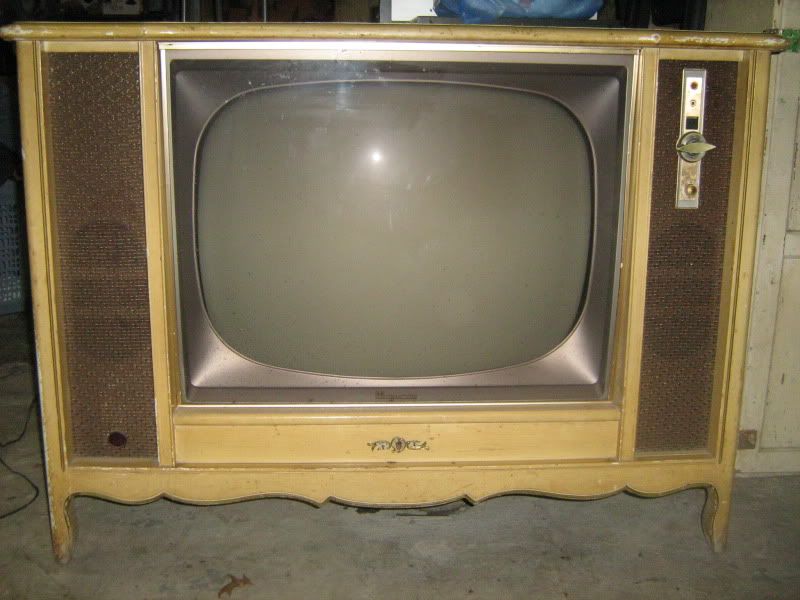Fletch
I'll Lock Up
- Messages
- 8,865
- Location
- Iowa - The Land That Stuff Forgot
The lamp was a neon glowlamp whose brightness fluctuated with the intensity of the signal. It illuminated the lens in a dim reddish-pink. The lamp fulfilled the luminosity function of a picture tube. The lens was analogous to a screen - one seldom bigger than 3", and usually much smaller.In a little book about electronics, from 1932, a schematic of a Tv set. No picture tube, but a disc with lens and lamps and a motor.
The disc, placed between the lamp and lens, had a spiral of holes (24 to 80, depending on the broadcast system) that allowed the proper part of the lens (ie: the picture) to light up so many times a second. The disc fulfilled the scanning function of a picture tube.
It was really that simple - except that you needed 2 radio sets, one for video and one for audio (if any was provided). There could also be sync problems if you were plugged into a different frequency of power line than the station used. Then you had to punch a little button to keep the picture steady.
A few British experimenters have actually fed "old standard" definition video (no HD!) to mechanical sets. Only headshots were at all intelligible - much as in the days of mechanical experiments. It wouldn't have worked at all except for a handwritten program to translate the signal from 625 horizontal lines, the old British standard, to the REALLY old one of just 30 vertical lines.I would love to see the results of anyone who tried to make a Tv in those days... (probably it won't work today because the number os lines, etc).
It says something about this method of making TV that in the 75 years since it fell from use, there has been exactly one attempt to recreate it in a full-length program. In 1967 a British (again!) TV engineer rebuilt some old pickup equipment and a receiver, and brought back a producer who had done a playlet for the BBC in 1930. Here are the results.
[video=youtube;RJoYskwKxsM]http://www.youtube.com/watch?v=RJoYskwKxsM[/video]
I find this little clip fascinating for what it is. But modern-day video professionals tend to react to it as a kind of gross joke. Even the guy who posted it on YouTube felt a need to apologize.
Last edited:








.jpg)


